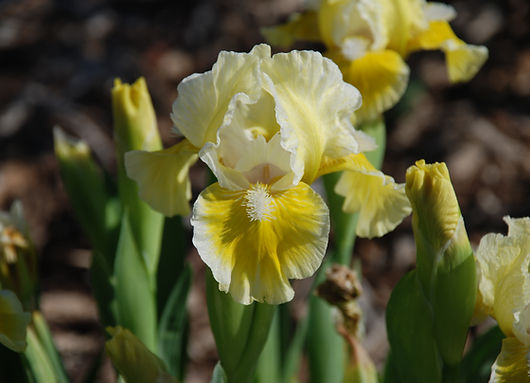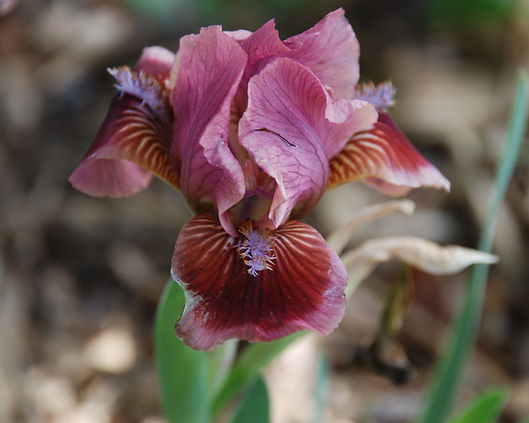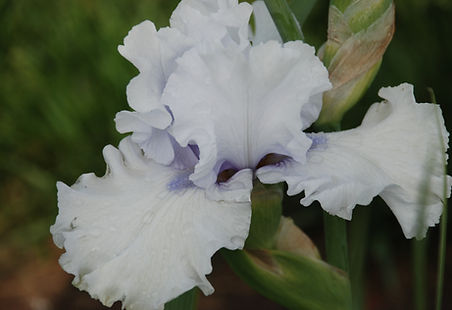Flint Hills
Iris Society

How to Grow Bearded Iris

When to Plant
For best results, iris should be planted in July,
August or September. It’s imperative that the
roots of newly planted iris be well established
before the growing season ends.
Iris come in a rainbow of colors, and they’re
one of the easiest perennials to grow. With a
minimum of care they will reward you with
beautiful blooms year after year. Follow a few
simple steps and you’ll be a successful iris
grower.

Where to Plant
Iris need at least a half day of sun. In
extremely hot climates some shade is beneficial,
but in most places iris do best in full sun. Be sure
to provide you iris good drainage, planting either
on a slope or in raised beds.
Soil Preparation
Iris will thrive in most well-drained garden
soils. Planting on a slope or in raised beds helps
ensure good drainage. If your soil is heavy,
compost or humus may be added to improve
drainage.
The ideal pH is 6.8 (slightly acidic), but iris
are tolerant in this regard. To adjust the pH of
your soil, lime may be added to acidic soils or
sulfur to alkaline ones. It is always best to have
your soil analyzed before taking corrective
measures.
While preparing your soil, soak iris in water
for 10-15 minutes to reconstitute the roots and
rhizome.

Depth to Plant
Iris should be planted so the tops of the
rhizomes are exposed and the roots are spread out
facing downward in the soil. Firm the soil around
each rhizome and then water to help
settle the soil. A common mistake is to plant iris
too deeply.

Watering
Newly set plants need moisture to help their
root systems become established. Specific
watering information depends on your climate
and your soil, but keep in mind that deep watering
at long intervals is better than more frequent
shallow watering. Once established, iris normally
don’t need to be watered except in extreme
drought conditions. Over watering is a common
error. Re-blooming iris do require a little extra
watering during the summer, however, to produce
their fall blooms.
Fertilization
Specific fertilizer recommendations depend on
your soil type, but bone meal, super phosphate
and 6-10-10 are all effective. A light application
at planting, again in the early spring and a second
application about a month after bloom will reward
you with good growth and blooms. Avoid using
anything high in nitrogen, as nitrogen encourages
rot problems.

Thinning Old Clumps
Iris need to be thinned or divided before they
become over crowded, generally every 3-4 years.
If iris are allowed to become too crowded the
bloom will suffer, some varieties may crowd
others out and disease problems may be
aggravated. Dig up the entire clump, separate the
rhizomes (removing any diseased or damaged
ones) and replant them as soon as possible.

Distance Apart
Iris are generally planted 12-24 inches apart.
Close planting gives an immediate effect, but
closely planted iris will need to be thinned often.
Plants spaced further apart will need less frequent
dividing.
General Garden Care
Keep your iris beds clean and free of weeds
and debris, allowing the tops of the rhizomes to
bask in the sun. Bloom stems should be cut off
close to the ground after blooming. Healthy
green leaves should be left undisturbed, but
diseased or brown leaves should be removed.
